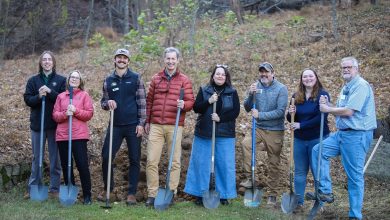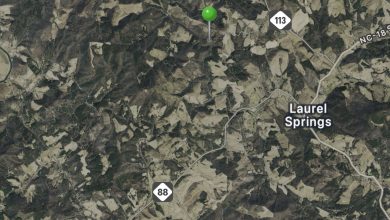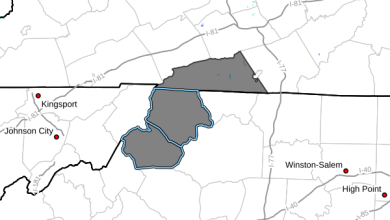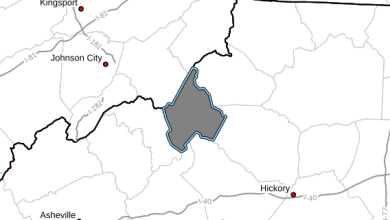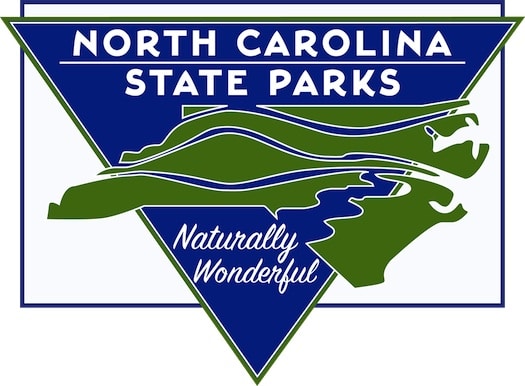
Last Updated on January 30, 2024 1:59 pm
RALEIGH, N.C. — The North Carolina state parks system welcomed more than 20.1 million visitors in 2023 and acquired over 2,890 acres of new land, according to the N.C. Division of Parks and Recreation. Visitation at state parks increased by 4% — more than 755,000 — from 2022.
“State parks’ growth in visitation and acreage puts an exclamation point on an incredibly successful Year of the Trail in North Carolina,” said Department of Natural and Cultural Resources Secretary Reid Wilson. “Residents and out-of-state visitors came out to enjoy what the Great Trails State has to offer, and we are fortunate that Governor Roy Cooper and the legislature understand the rising public demand for outdoor recreation and responded with expanded investments in more land, trails, blueways, and greenways.”
For the second year in a row, Jordan Lake State Recreation Area was the most visited park in the system, welcoming more than 2.5 million visitors — about half a million more than last year. The park also broke the record for visitation to a single park unit, beating the record it set last year, when it became the first park to reach 2 million annual visitors. Five parks reached the 1-million-mark for annual visitation this year: Falls Lake, Fort Fisher, and Kerr Lake state recreation areas, and Fort Macon and Pilot Mountain state parks. Twenty-seven of 42 units saw an increase in annual visitation from 2022. Rendezvous Mountain, a satellite area of Stone Mountain State Park, more than doubled its visitation from the previous year. The largest visitation growth for a state park was 95% — at both Mayo River and Morrow Mountain state parks.
“We were excited to welcome more visitors to enjoy our naturally wonderful state parks, especially as several of our parks have recently added new campgrounds and visitor centers and as we celebrated the Year of the Trail,” said State Parks Director Brian Strong. “I commend our staff for their continued hard work in ensuring the best possible visitor experience while staying true to our mission of conservation, recreation, and education.”
The state parks system also saw growth in total land size, ending the year at 262,074 acres, which includes state parks and state natural areas.
Examples of significant land acquisitions in 2023 include:
- Pisgah View State Park, where the initial acreage of 1,568 was finally completed in November, after the last 170 acres of acquisition from the Cogburn family. The division began the master planning process for the newest state park last year as well, with additional public input meetings scheduled for February 2024.
- Bakers Lake State Natural Area, which was authorized by the General Assembly in 2021. The division completed the purchase from The Conservation Fund over the summer, with funding from the North Carolina Land and Water Fund and the federal Land and Water Conservation Fund. A ribbon cutting was held in October to celebrate that the largest unprotected bay lake in North Carolina is now preserved forever. The division presented a commemorative plaque to the prior owner of the property, Dr. C.M. Johnson, at the event.
- State trails, one of the units of the state parks system, grew in number and land size last year. Governor Cooper signed a law authorizing the new Haw River State Trail and the new Equine State Trail. Meanwhile, the division acquired a large, 1,127-acre parcel along the Neuse River in Johnston County for the Mountains-to-Sea State Trail, as well as a total of 304 acres for Deep River State Trail. These land acquisitions allow the division to add access points and help ensure the completion of the planned trail corridors.
“It was a productive year for the division by all accounts — land protection, planning, natural resource management, operations, safety, and interpretation and education,” said Strong. “We look forward to the year ahead as we continue our stewardship of these beloved places in North Carolina.”
About North Carolina State Parks
North Carolina State Parks manages more than 262,000 acres of iconic landscape within North Carolina's state parks, state recreation areas and state natural areas. It administers the North Carolina Parks and Recreation Trust Fund, including its local grants program, as well as a state trails program, North Carolina Natural and Scenic Rivers and more, all with a mission dedicated to conservation, recreation and education. The state parks system welcomes more than 20 million visitors annually.
About the North Carolina Department of Natural and Cultural Resources
The North Carolina Department of Natural and Cultural Resources manages, promotes, and enhances the things that people love about North Carolina — its diverse arts and culture, rich history, and spectacular natural areas. Through its programs, the department enhances education, stimulates economic development, improves public health, expands accessibility, and strengthens community resiliency.
The department manages over 100 locations across the state, including 27 historic sites, seven history museums, two art museums, five science museums, four aquariums, 35 state parks, four recreation areas, dozens of state trails and natural areas, the North Carolina Zoo, the North Carolina Symphony, the State Library, the State Archives, the North Carolina Arts Council, the African American Heritage Commission, the American Indian Heritage Commission, the State Historic Preservation Office, the Office of State Archaeology, the Highway Historical Markers program, the North Carolina Land and Water Fund, and the Natural Heritage Program. For more information, visit ncdcr.gov.










